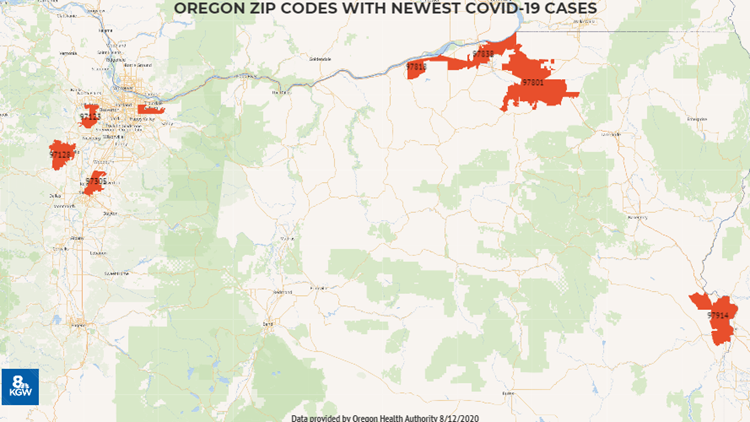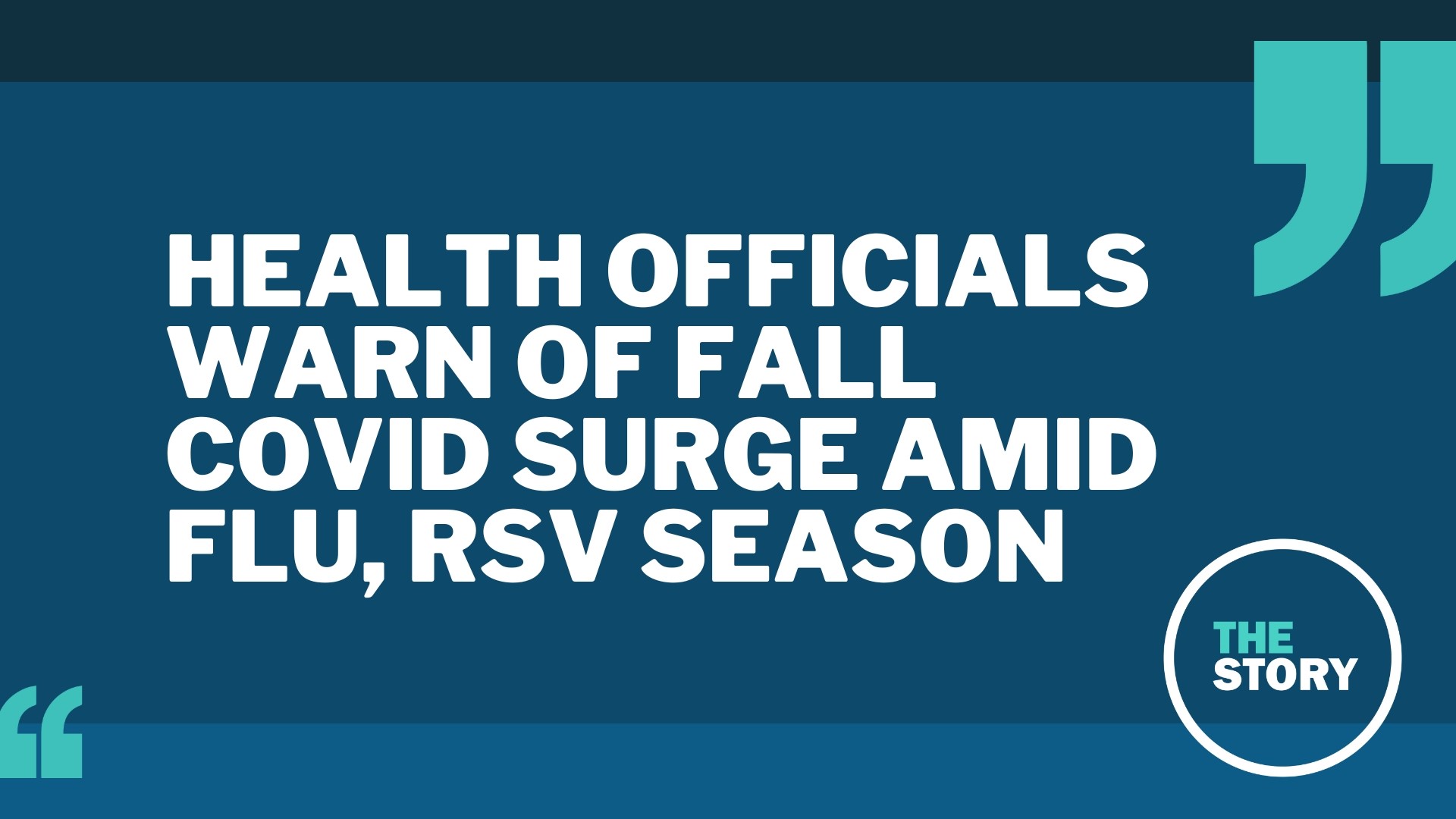PORTLAND, Ore. — Data from the Oregon Health Authority (OHA) continues to show the largest COVID-19 spikes are in Eastern Oregon.
In its weekly report published Wednesday, OHA updated the breakdown of cases across the state by ZIP code. The data is current as of 11 p.m. Sunday, Aug. 9. The three areas with the most new cases were in Umatilla and Malheur counties.
The large increase in cases shows the coronavirus is still widespread in Umatilla County. The county has had a total of 2,362 known cases during the pandemic, the fourth most of any county in Oregon, despite having a population of 78,000. The three Oregon counties with more cases (Multnomah, Washington and Marion) all have at least 300,000 people. Clackamas County, which has a population of more than 400,000 people, has had 700 fewer cases during the pandemic than Umatilla County.
Workplace outbreaks are contributing to Umatilla County’s high case count. There are 80 active COVID-19 workplace outbreaks in Oregon and 21 of them, more than 25% are in the Eastern Oregon county. That includes the state’s largest active workplace outbreak, which is now at the Eastern Oregon Correctional Institution in Pendleton.
Two weeks ago, Gov. Kate Brown put Umatilla County back under a stay-home order because of the prevalence of COVID-19 in the community.
Other areas that saw noticeable jumps last week were Marion County and parts of Multnomah County.
Here’s a look at the 12 ZIP codes with the most new cases:
- 97838 (Hermiston, Umatilla County): 113 new cases (from 1,189 to 1,302 total cases)
- 97914 (Ontario, Malheur County): 98 (493 to 591)
- 97801 (Pendleton, Umatilla County): 85 (350 to 435)
- 97071 (Woodburn, Marion County): 75 (548 to 623)
- 97080 (Gresham, Multnomah County): 64 (321 to 385)
- 97128 (McMinnville, Yamhill County): 61 (171 to 232)
- 97301 (Salem, Marion County): 57 (403 to 460)
- 97818 (Morrow County): 53 (194 to 247)
- 97233 (Rockwood/Centennial, Multnomah County): 48 (519 to 567)
- 97236 (Centennial, Multnomah County): 47 (533 to 580)
- 97305 (Northeast of Salem, Marion County): 46 (382 to 428)
- 97123 (Hillsboro, Washington County): 43 (381 to 424)
Here’s a look at the 13 ZIP codes with the highest increase of cases by percentage:
- 97540 (Jackson County): 64% (from 14 to 23 cases)
- 97367 (Lincoln City, Lincoln County): 63% (30 to 49)
- 97215 (Southeast Portland, Multnomah County): 51% (39 to 59)
- 97471 (Douglas County): 45% (24 to 35)
- 97016 (Clatskanie, Columbia County): 45% (11 to 16)
- 97239 (South Portland, Multnomah County): 42% (35 to 50)
- 97826 (Umatilla County): 40% (10 to 14)
- 97446 (Harrisburg, Linn County): 40% (10 to 14)
- 97128 (McMinnville, Yamhill County): 35% (171 to 232)
- 97478 (Lane County): 32% (64 to 85)
- 97526 (Grants Pass, Josephine County): 30% (40 to 52)
- 97231 (Sauvie Island, Multnomah County): 30% (13 to 17)
- 97101 (Amity, Yamhill County): 30% (10 to 13)
How many COVID-19 cases are in your ZIP code? Check here
While the aforementioned areas saw an increase in cases, OHA said there was a slight drop last week in the number of cases statewide. There were 2,278 known COVID-19 cases two weeks ago and 2,122 cases last week, according to the OHA. The number of deaths also went down, from 39 two weeks ago to 29 last week, as did the positive test rate, which fell from 6.4% to 5.4% last week. Health officials said last week it appeared Oregon’s weekly number of cases had plateaued.
The age group most affected by COVID-19 remains people ages 20-29, although people 80 and older account for nearly half of the hospitalizations, OHA said. Most cases continue to be sporadic, meaning there is no known source and indicates the virus is widespread.



